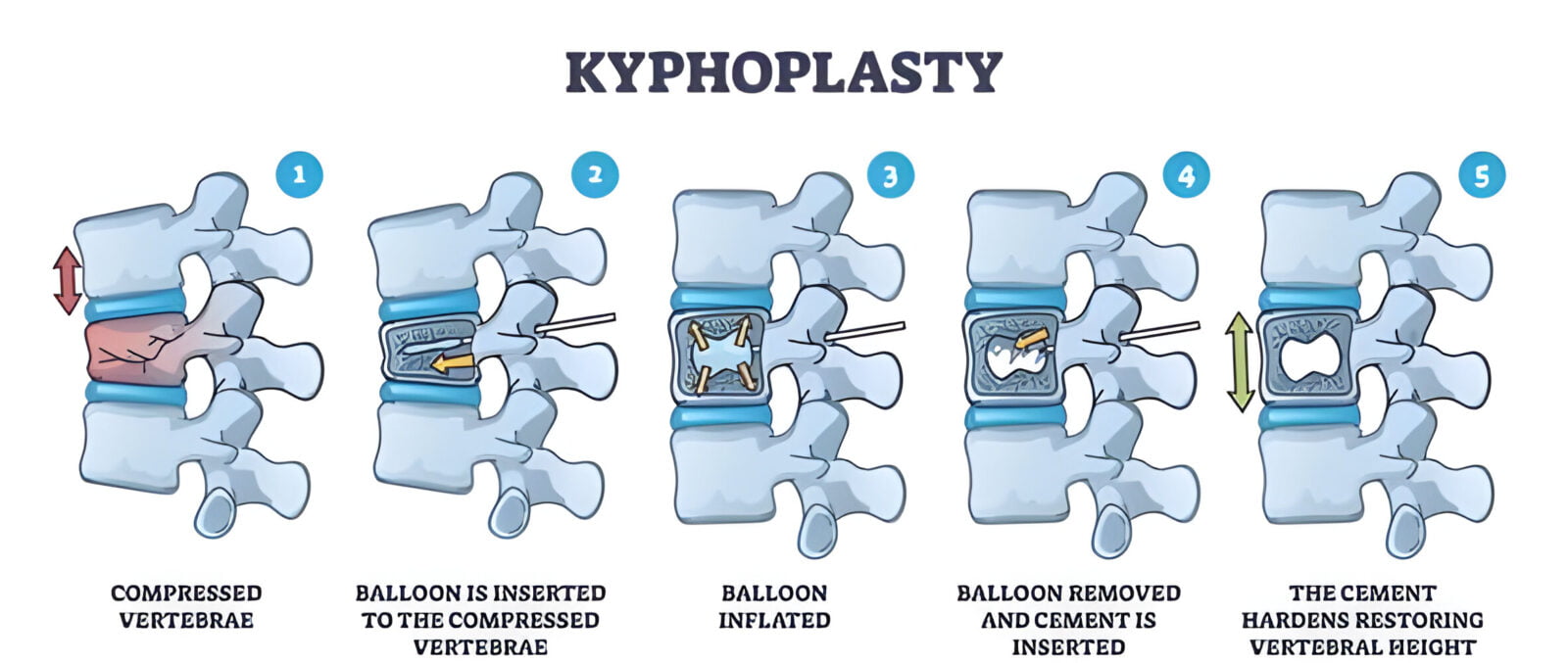Osteoporosis is a common condition characterized by weakened bones, making them more susceptible to fractures. Among the most frequent complications of osteoporosis are vertebral compression fractures (VCFs), which occur when one or more of the bones in the spine weaken and collapse.
These fractures can lead to severe pain, deformity, and a significant reduction in quality of life. However, advancements in medical technology have brought about procedures like kyphoplasty, offering hope and relief to those suffering from osteoporosis-related VCFs.
Understanding Vertebral Compression Fractures:
Vertebral compression fractures often occur in the thoracic or lumbar spine and can result from minimal trauma or even from daily activities like bending or lifting. Individuals with osteoporosis are particularly susceptible to these fractures due to the weakening of their bones.
When a vertebra collapses, it can cause the spine to become misaligned, resulting in a hunched-forward posture known as kyphosis. This curvature can lead to chronic pain, difficulty breathing, and limitations in mobility.
What is Kyphoplasty?
Kyphoplasty is a minimally invasive surgical procedure designed to treat vertebral compression fractures and alleviate associated symptoms. It is typically performed under local or general anesthesia and involves the following steps:
- Accessing the Fractured Vertebra: Using fluoroscopic guidance (real-time X-ray imaging), the surgeon makes a small incision in the back and inserts a narrow tube called a trocar into the fractured vertebra.
- Balloon Catheter Insertion: A special balloon catheter is then threaded through the trocar and into the collapsed vertebra. Once in position, the balloon is inflated to create a void or cavity within the bone.
- Bone Cement Injection: After the cavity is created, the balloon is deflated and removed, leaving behind a space within the vertebra. This void is filled with bone cement, which hardens quickly, stabilizing the fractured bone and restoring its height.
- Closure: The incision is closed with sutures or adhesive strips, and a bandage is applied.
Benefits of Kyphoplasty
Kyphoplasty offers several advantages over traditional treatments for vertebral compression fractures, including:
- Pain Relief: By stabilizing the fractured vertebra and restoring its height, kyphoplasty can significantly reduce pain and improve mobility.
- Improved Spinal Alignment: The procedure helps restore the natural curvature of the spine, preventing further deformity and reducing the risk of complications such as kyphosis.
- Quick Recovery: Kyphoplasty is a minimally invasive procedure that typically requires only a short hospital stay and allows for a quicker recovery compared to open surgery.
- Minimal Risk: Complications associated with kyphoplasty are rare, making it a safe and effective treatment option for many patients.
Post-Kyphoplasty Recovery and Rehabilitation
After undergoing kyphoplasty, patients are usually advised to take it easy for a short period to allow the incision site to heal. However, most can resume their normal activities within a few days to weeks following the procedure. Physical therapy may be recommended to help improve strength and flexibility in the back and core muscles, further aiding in the recovery process.
Conclusion
Kyphoplasty is a valuable treatment option for individuals suffering from osteoporosis-related vertebral compression fractures. By stabilizing fractured vertebrae and restoring spinal alignment, this minimally invasive procedure can alleviate pain, improve mobility, and enhance overall quality of life for patients. As medical technology continues to advance, kyphoplasty and similar interventions offer hope to those affected by osteoporosis, providing them with the opportunity to regain strength and independence.









